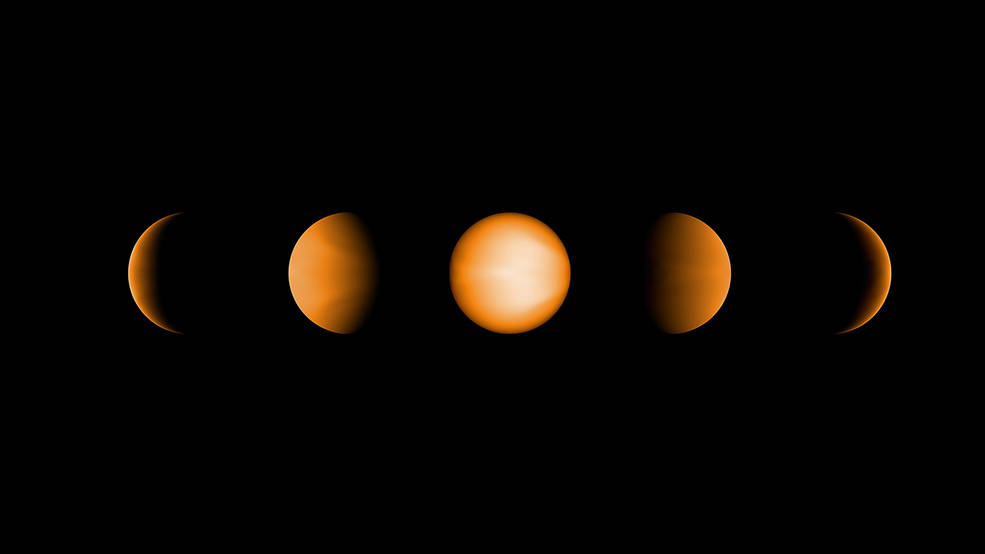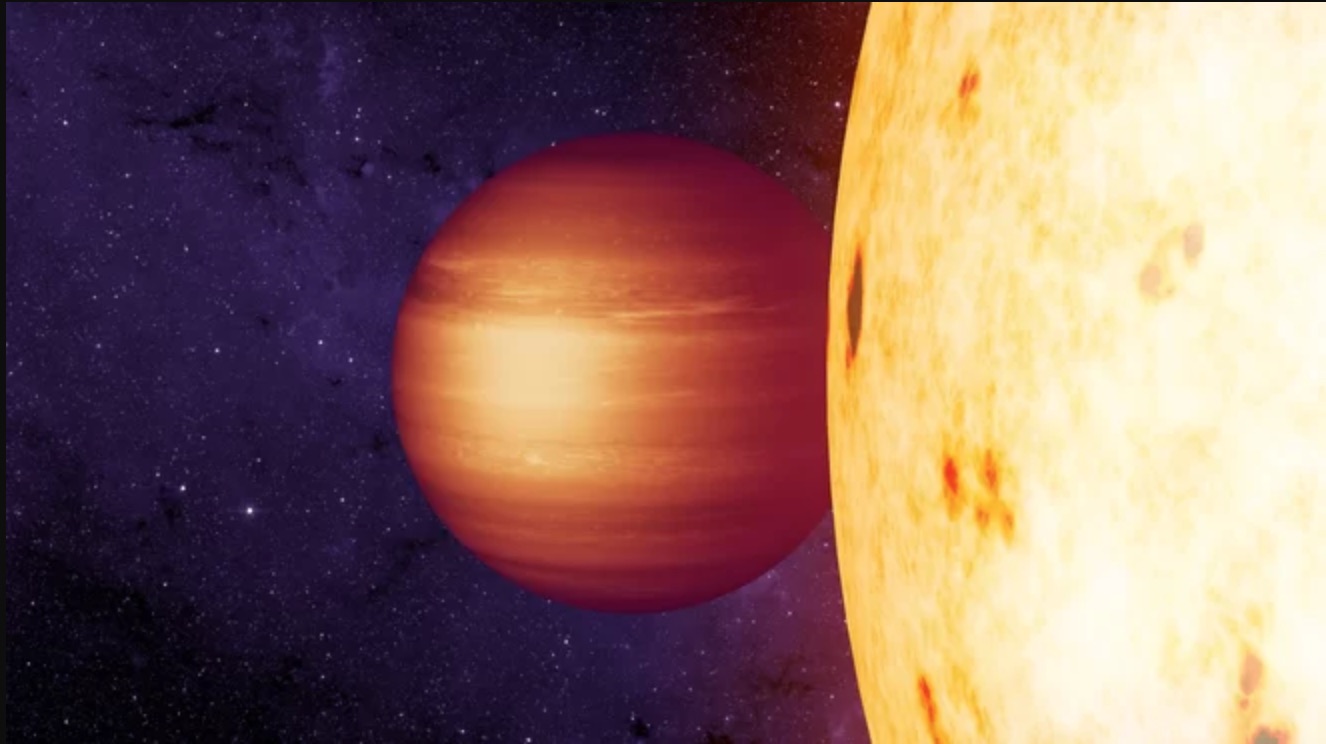On Ultrahot Exoplanets, Water Can Form at Night and Die by Day

Water and liquid rubies may exist under the nightside clouds of distant Jupiter-like exoplanets, but they melt in the heat of the planets' scorchingly hot bright sides, according to NASA.
People experience the effects of a turning planet every day: When the city of Istanbul in Turkey faces the sun, the city of Honolulu in Hawaii is in darkness; when a metropolis like New York is warming up during the day, another like Beijing is cooling down at night. And roughly every 12 hours, the experiences reverse.
Now imagine visiting a "hot Jupiter," a gas giant planet about the size of its solar-system namesake that does not turn; a planet that shows the same side of itself to a star and that orbits it very closely. [Pac-Man' and 'Mario Kart': How to Understand Planet Formation]
Imagining this scenario will have to suffice; even if a rocketship could take a voyager to one of the subjects of a recent study, an "ultrahot" Jupiter planet called WASP-103b, the traveler would be surrounded by sweltering dayside temperatures of about 4,800 degrees Fahrenheit (2,700 degrees Celsius), according to a June 2018 paper led by researcher Laura Kreidberg from the Harvard-Smithsonian Center for Astrophysics in Cambridge, Massachusetts. This work is one of four recent studies included in an Aug. 9 NASA statement about ultrahot Jupiters.
"The daysides of these worlds are furnaces that look more like a stellar atmosphere than a planetary atmosphere," Vivien Parmentier, an astrophysicist at Aix Marseille University in France and lead author of one of the new studies included in the space agency's statement.. "In this way, ultrahot Jupiters stretch out what we think planets should look like."

The ultrahot Jupiters don't reflect a lot of light from their stars, according to NASA, but their bright sides' inferno-like temperatures are hot enough to glow, allowing researchers to observe them with instruments like the Spitzer and Hubble space telescopes. But, the nightsides of ultrahot Jupiters are trickier for them to probe because they are not hot enough to be visible. So the scientists combined observations of ultrahot Jupiters with computer simulations to develop a new theoretical understanding of what's happening in the hemispheres of their atmospheres.
According to Parmentier's findings, water comes apart and recombines. Water molecules are thought to exist in those atmospheres because, according to the statement, they are present in similar but cooler gas giant planets. Research also shows that molecules like aluminum oxide (the basis for rubies) separate on the star-facing side of ultrahot Jupiters, and recombine on the much-cooler nightside. This might be the case for water, too.
Get the Space.com Newsletter
Breaking space news, the latest updates on rocket launches, skywatching events and more!
More studies will be necessary to better grasp the duality of these ultrahot worlds, and according to the space agency, the next-generation James Webb Space Telescope might assist the research into ultrahot Jupiters.
The new study led by Parmentier was published Aug. 7 in the journal Astronomy and Astrophysics. In addition to this work and the study led by Kreidberg, two more studies contributed to the NASA release: They were led by Megan Mansfield and Jacob Arcangeli, and were published in The Astronomical Journal and The Astrophysical Journal Letters, respectfully.
Follow Doris Elin Salazar on Twitter @salazar_elin. Follow us @Spacedotcom, Facebook and Google+. Original article on Space.com.
Join our Space Forums to keep talking space on the latest missions, night sky and more! And if you have a news tip, correction or comment, let us know at: community@space.com.

Doris is a science journalist and Space.com contributor. She received a B.A. in Sociology and Communications at Fordham University in New York City. Her first work was published in collaboration with London Mining Network, where her love of science writing was born. Her passion for astronomy started as a kid when she helped her sister build a model solar system in the Bronx. She got her first shot at astronomy writing as a Space.com editorial intern and continues to write about all things cosmic for the website. Doris has also written about microscopic plant life for Scientific American’s website and about whale calls for their print magazine. She has also written about ancient humans for Inverse, with stories ranging from how to recreate Pompeii’s cuisine to how to map the Polynesian expansion through genomics. She currently shares her home with two rabbits. Follow her on twitter at @salazar_elin.









